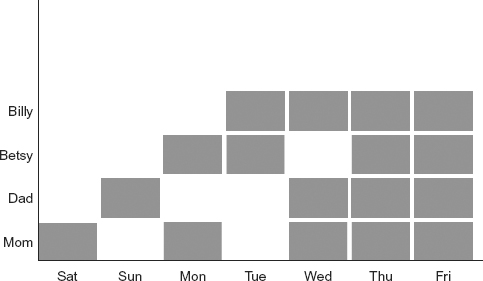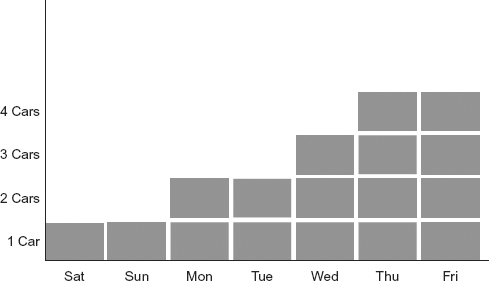Beauty of Hybrids
If the demand is variable, a hybrid is almost always best. The key is to think of the demand as having separable components. A typical family, for example, might need between zero and four cars at any given time. The schedule might be as shown in Exhibit 11.2.
EXHIBIT 11.2 Illustrative Varying Resource Needs by Individual Driver

Given that Billy can drive Betsy’s car, and Betsy can drive Dad’s car, we can think of this demand curve as multiple tranches of demand: the demand for a first car, the demand for a second car, and so forth, as shown in Exhibit 11.3.
EXHIBIT 11.3 Illustrative Varying Aggregate Resource Needs

Now consider the decision regarding the first car. The family has flat demand for the first car, so a dedicated car—for example, via a lease or ownership—would make sense. However, the need for four cars is infrequent, so that fourth car might be best served via a rental. And for the second and third cars, it depends on where the breakeven point is, based on the value of U.
Simply put, demand can be partitioned into three mutually exclusive tranches of demand across any given time period, T.
Consider a tranche where t <
Get Cloudonomics: The Business Value of Cloud Computing, + Website now with the O’Reilly learning platform.
O’Reilly members experience books, live events, courses curated by job role, and more from O’Reilly and nearly 200 top publishers.

